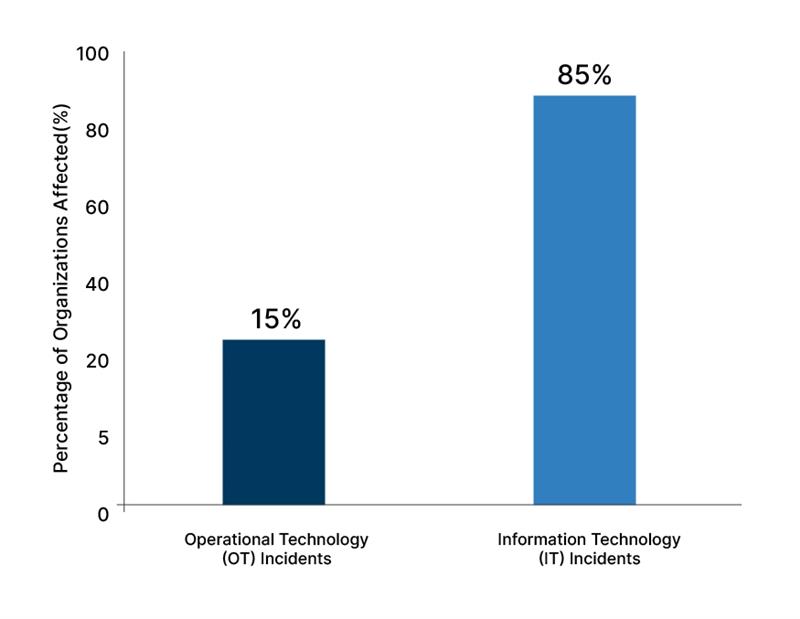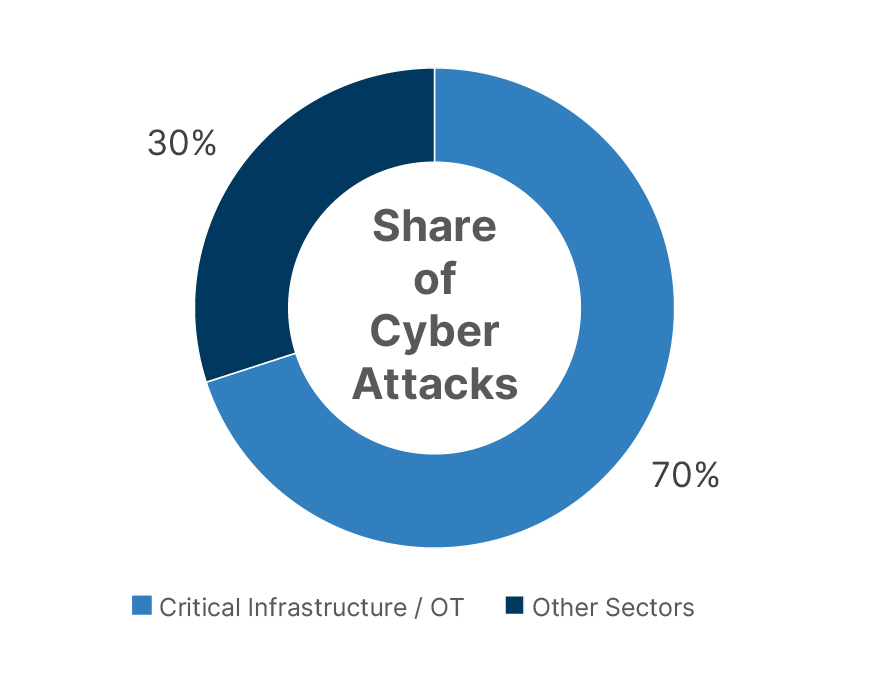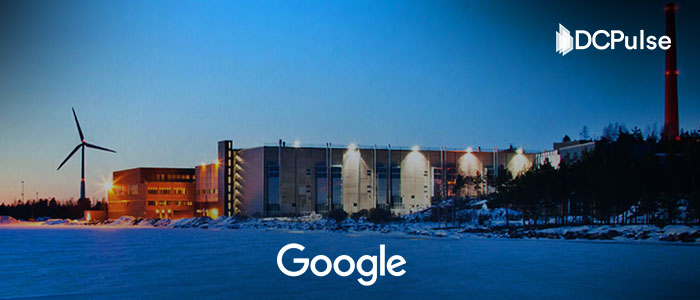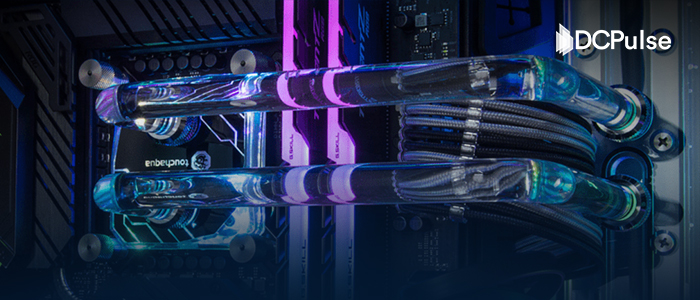Cyber threats are no longer confined to laptops or servers; they are moving into the very buildings we live and work in. From smart offices to industrial facilities, the integration of IoT devices, automated controls, and connected sensors has opened new doors for hackers. A single breach in a building management system can disrupt power, HVAC, or security operations, creating both financial and safety risks.
Companies like Microsoft are now treating facility management as a cybersecurity priority, combining IT and OT (operational technology) teams to monitor vulnerabilities in real time. Experts warn that the intersection of physical and digital security is becoming the new frontier, with attacks becoming more sophisticated and frequent. For facility managers, ignoring cyber risks is no longer an option, protecting the building infrastructure is as critical as protecting the network itself.
How Cyber Risks Are Shaping Modern Facilities
Facility management is no longer just about keeping lights on and HVAC running. Today’s buildings are smart and highly connected, which makes them prime targets for cyberattacks. According to IBM X-Force, 15% of organizations reported incidents that affected their operational technology (OT) in a recent study.
Cyber Incidents affecting OT vs IT Environments

IoT adoption is booming: sensors, smart meters and connected building controls help cut costs, but they also widen the attack surface. And it’s not just theory: Kaspersky’s ICS team found that in early 2025, 25% of building-automation systems faced malicious objects being blocked, making building systems one of the top-attacked OT sectors.
Meanwhile, insider risk is real. IBM reports that 83% of organizations saw insider-threat incidents in 2024, a major concern for critical building systems where staff have deep access.
Critical infrastructure is under pressure too. IBM says that 70% of cyberattacks it traced last year involved infrastructure organizations, including those running physical systems.
Share of Cyberattacks by Target Sector

Facility teams are responding; many are now merging their IT and OT security teams so they can monitor both cyber and physical systems together. That’s a big shift, because attacks on OT systems don’t just threaten data, they can shut down equipment, compromise safety, or leak sensitive buildingcontrol information.
From Smart Controls to Predictive Security: How Tech is Changing Facility Management
Facilities today are no longer just physical spaces; they are intelligent systems, packed with sensors, IoT devices, and automated controls. With this rise comes a surge in cyber risks, and companies are responding with innovative solutions that combine building management and cybersecurity.
Johnson Controls has introduced Metasys Cyber Health, a real-time monitoring tool that tracks anomalies in HVAC, lighting, and access systems while sending alerts if security rules are breached.
Schneider Electric has integrated predictive cybersecurity into its EcoStruxure Building Operation platform, enabling facility managers to anticipate and prevent threats before they cause downtime.
Meanwhile, Siemens Smart Infrastructure is deploying edge security nodes for operational technology, allowing both legacy and modern devices to authenticate continuously and reducing unauthorized access.
The adoption of these innovations is measurable. According to Memoori, 11.8% of all commercial IoT devices are in smart buildings today, growing at a 13.7% annual rate.
IoT Device Growth in Smart Commercial Buildings (2020–2030)
.jpg)
Similarly, Gartner reports that over 60% of large enterprises now integrate OT and IT cybersecurity in building management, a 20% increase from just three years ago.
These advancements are more than upgrades; they are reshaping facility operations. Real-time AI monitoring, predictive threat detection, and modular security solutions are creating safer, smarter buildings, capable of protecting both physical assets and sensitive data. As these tools mature, facility managers can scale cybersecurity across multiple sites without compromising operational efficiency.
How Industry Leaders Are Strengthening Building Security
Facility management and cybersecurity are converging fast, and industry leaders are making strategic moves to stay ahead. Johnson Controls has expanded its Metasys platform globally, integrating cyber-health monitoring and partnering with local integrators in Europe, North America, and Asia to standardize secure building operations.
Schneider Electric has been active in both partnerships and acquisitions. Its EcoStruxure Building Operation platform is now deployed in over 35,000 commercial buildings worldwide, with cybersecurity modules added to reduce OT/IT vulnerabilities. The company recently teamed up with Microsoft Azure to enable cloud-connected dashboards for predictive maintenance and AI-driven threat detection.
Siemens Smart Infrastructure has rolled out edge security nodes and zero-trust solutions across multiple industrial and commercial facilities. In addition to technology deployment, Siemens is collaborating with government initiatives in Germany and the EU to set standards for secure smart building infrastructure.
Regionally, governments in Singapore, Germany, and the UAE are incentivizing secure smart building adoption via grants, tax breaks, and regulatory frameworks, pushing faster adoption of AI-enabled monitoring, OT/IT integration, and cyber-resilient infrastructure.
These moves reflect a broader trend: companies are not only providing technology but are actively shaping the global ecosystem, ensuring that smart buildings are secure, resilient, and ready for large-scale deployment.
Why Facility Security Is Now a Board-Level Issue
Cyber risk in buildings is no longer an IT or FM problem alone; it’s a business risk. As sensors, access systems and control networks multiply, the chance of an incident that disrupts operations, harms people, or damages reputation rises. Firms that treat facility security as an afterthought will pay more later in fines, downtime and lost trust.
The path forward is clear. First, tie facility teams to corporate cyber programs so OT and IT share visibility and incident playbooks. Second, invest in basic hardening, patching, network segmentation, zero-trust gateways, to reduce easy wins for attackers. Third, adopt continuous monitoring and AI-driven anomaly detection so threats are caught early. Standards and guidance from bodies like ENISA show practical steps for securing IoT and building systems.
For executives, the strategic takeaway is simple: protect the physical fabric of your business the same way you protect data. Funding, governance and clear metrics (mean time to detect, incidents avoided, uptime preserved) will turn smart buildings into resilient assets, not points of failure.


.jpg)

